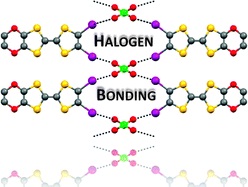
This critical review describes how halocarbons can function as effective binding sites of anions via halogen bonding, the noncovalent interaction whereby halogen atoms accept electron density. The focus is on the binding and coordination of oxyanions, by far the most numerous class of anions in organic chemistry. It is shown how a large variety of inorganic and organic oxyanions can form discrete adducts and 1D, 2D, or 3D supramolecular networks with chloro-, bromo-, and iodocarbons. Specific examples are discussed in order to identify new supramolecular synthons based on halogen bonding and to outline some general principles for the design of effective and selective receptors based on this interaction. The interaction allows for several other anions to self-assemble with halocarbons and mention is also given to the halogen bonding-based coordination of halides, polycyano- and polyoxometallates